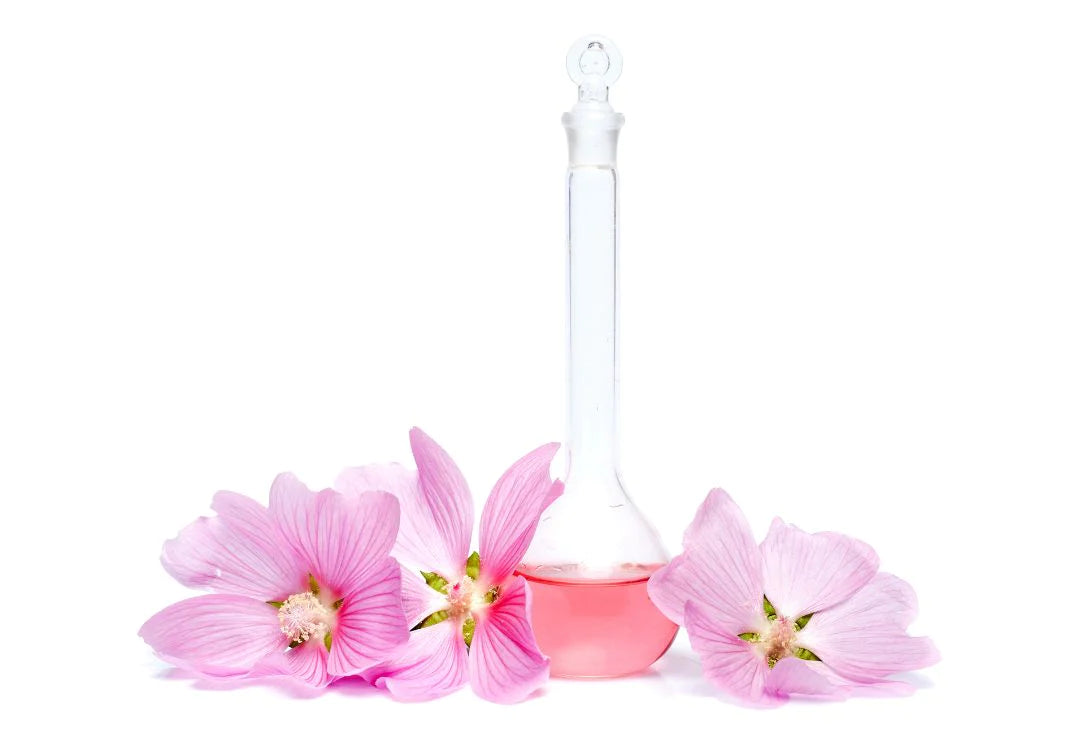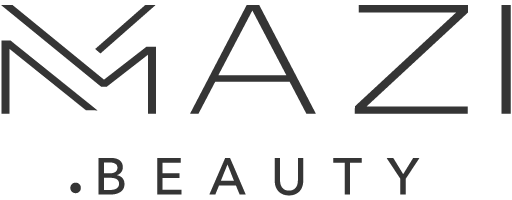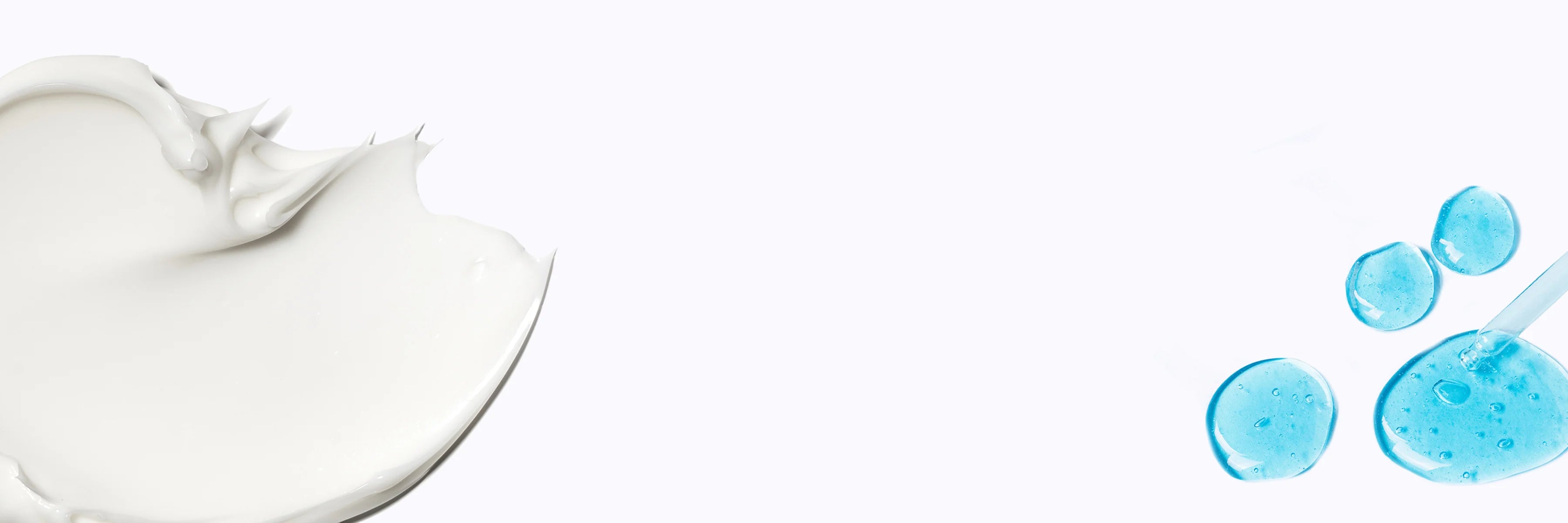The Made Without List
The following substances are restricted or prohibited in any product formulated
Aluminium Powder
Elemental aluminum (powder) is the third most abundant element on earth. We are exposed to it through a variety of source, including drinking water and pharmaceuticals. Aluminum can also form as salt or oxides. The toxicity of different forms of aluminum depends largely on its solubility in water and the pH range. Aluminum powder is a toxicant (at high doses) and is never used in our products.
Animal Derived Ingredients
We never use Animal Musks and/or Animal Fats. Animal Derived Ingredients are also prohibited, with these exceptions: Cholesterol, Lactose, Lanolin, and Keratin.
Benzalkoniumchloride
Bisfenol A (BPA)
Butoxethano
Gebutyleerd Hydroxyanisole (BHA)
We never use Animal Musks and/or Animal Fats. Animal Derived Ingredients are also prohibited, with these exceptions: Cholesterol, Lactose, Lanolin, and Keratin.
Kamfer (>3%)
Chemical Sunscreens
Some chemical sunscreens have been linked to hormone disruption Mazi prohibits all Chemical Sunscreens, which include (but are not limited to): oxybenzone/benzophenone-3, avobenzone, octinoxate, homosalate, and octocrylene.
Coal Tar
Ethanolamines (Including DEA/TEA/MEA/ETA)
Ethylenediaminetetraacetic (EDTA)
Calcium disodium EDTA, Tetrasodium EDTA, Trisodium EDTA, etc., are chelating agents, meaning that they bind to metal ions, which inactivates them. These ingredients are not linked to consumer health issues, but they might be a problem for aquatic life since they don’t break down in the environment and have been found in waterways.
Formaldehydes
Although typically no listed as an ingredient, Formaldehyde “releasers” or “donors” often are listed on ingredient labels. Including tosylamide/formaldehyde resin, mehtylene glycol, paraformaldehyde, polyoxymethylene urea, methenamine, benzylhemlformal, quaternium-15.
Hydroquinone
Typically used for skin lightening reasons, it inhibits melanin synthesis, causes skin irritation, and may cause skin discoloration. In addition, hydroquinone is a metabolite of the carcinogen Benzene.
Isothiazolines (all)
Mercury and Mercury compounds
Methyl Cellosolve or 2-Methoxyethanol
This ingredient has been banned in the EU; it’s a solvent used as an additive in perfumes. It can cause skin irritation and may cause effects on the central nervous system, blood, bone marrow, kidneys, and liver.
Petrolatum and Paraffin
Petrolatum is a semisolid mixture derived form processed petroleum. Mineral Oil, Paraffin Wax, Liquid Paraffin, and several other ingredients are also petroleum distillation byproducts. The concerns with these ingredients are unsustainable sourcing and possible PAH contamination. PAH (stands for Polyaromatic Hydrocarbons), which are linked to cancer.
Nanoparticles
(titanium dioxide, zinc oxide, silver, fullerenes, silica, carbon black, quartz)
Parabens
(including: butylparaben, benzylparaben, ethylparaben, isobutylparaben, isopropylparaben, mehtylparaben, propylparaben)
PEG's
(allowed if tested for 1,4-dioxane with statement and/or test data)
PFA’s (including PTFE)
Phthalates
Phthalates are plasticizing chemicals. Some appear on product ingredient labels, but many may remain undisclosed, hiding under the term “fragrance.” since some phthalates have been linked to hormone disruption, they should be avoided at all times.
Phenoxyethanol (>1%)
Despite being a “controversial” ingredient, phenoxyethanol has a similar safety profile to, or even better than, other commonly used preservatives. Preservatives are necessary to kill/prevent microbes’ growth in any product containing water, so they are not a “nice to have” type of ingredient; they are a must-have.
The EU Scientific Committee on Consumer Safety published a final opinion on phenoxyethanol in 2016. The take-home of the 102-page document: The SCCS considers 2-phenoxyethanol safe for use as a preservative with a maximum concentration of 1.0%.
Plastic Microbeads
Polyacrylamide and Acrylamide
Propylene Glycol (>.1%)
Quaternary amine compounds (as preservatives)
(excluding: hydroxypropyl guar, hydroxypropyl trimonium chloride and cocodimopropryl quar hydroxysultaine)
Resorcinal
Retinyl Palmitate
As a retinoid, this ingredient may increase sun sensitivity when applied to skin and worn into direct sunlight.
Cyclic Silicones
Cyclic Silicons include Cyclotetrasiloxane (D4), Cyclopentasiloxane (D5), Cyclohexasiloxane (D6), and Cyclomethicone. Data indicates that some of these chemicals may have reproductive, developmental toxicity, and /or endocrine disruption concerns. They are also persistent in the environment and/or may build up in the food chain.
Shellac
Styrene
(bromostyrene, Dea-styrene/acrylates/dvp copolymer, Sodium styrene/Divinylbenzene copolymer, Styrene oxide, Styrene)
Sulfates
(sodium lauryl sulfate (SLS) and sodium lauryl ether sulfate (SLES))
Talc
(allowed with asbestos free statement and/or test data)
Toluene
Triclosan and Triclocarban
These ingredients are antibacterials used in both personal care and home-cleaning products, They’re persistent in the environment and may be associated with hormone disruption.
Triphenyl phosphate (TPHP)
Xylenes

Fragrance restrictions
Mazi Beauty prefers natural fragrances over synthetic fragrances.
In addition to the ingredients listed above, the ingredients listed below are prohibited from fragrance formulations.
- Dibutyl Phtthalate (DPB)
- Butyl Benzyl Phthalate (BBP)
- DI(2-Ethylhexyl)Phthalate (DEHP)
- Diisodecyl Phthalate (DIDP)
- Diisononyl Phthalate (DINP)
- Di-N-Hexyl Phthalate (DNP)
Coloring Restrictions
To create a visually enjoyable experience, we might formulate our
products using a minimum amount of non-irritating coloring agents.
Iron oxides, or synthetic iron oxides, are man-made but are actually made from natural ores, minerals, and are 100 % safe to use in cosmetic formulations.

